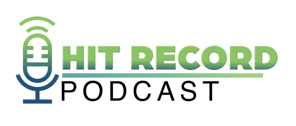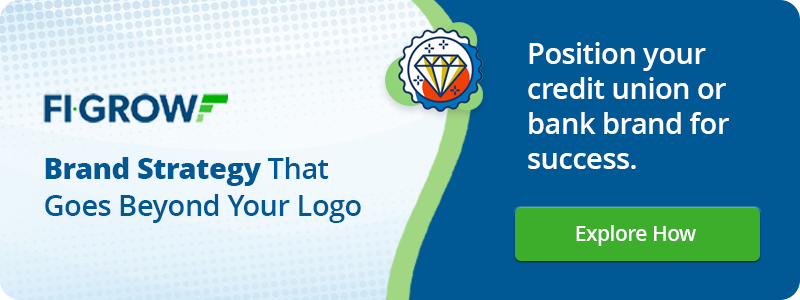Episode 92 - Effectively and Strategically Using Surveys to Drive Growth for Your Bank or Credit Union


Don't Miss An Episode, Subscribe Now

Surveys aren't just for collecting opinions—they’re tools for growth. In this episode, Meredith Olmstead and Nida Ajaz explore how banks and credit unions can use surveys strategically to deepen member relationships, improve product offerings, and make smarter, data-informed decisions. From onboarding to attrition, they share real use cases that turn feedback into action.
Key Takeaways:
-
Surveys + Data = Smarter Strategy: Relying on surveys alone can miss the mark. Marry member sentiment with real behavioral data to fuel better decisions.
-
Survey Timing Matters: Onboarding, application abandonment, and account closures are prime moments to gather actionable insights.
-
Make It Actionable: Use automation to route feedback, celebrate wins, respond to dissatisfaction, and drive follow-up campaigns (like Google reviews or referral asks).
Transcription:
Meredith Olmstead:
Hi, there. I'm Meredith Olmstead, CEO and founder of FI GROW Solutions. We are a digital marketing and sales consulting agency. We work exclusively with credit unions and community banks. And I am here with our senior vice president of marketing, Nida Ajaz. Say hi, Nida.
Nida Ajaz:
Hi, everyone.
Meredith Olmstead:
So Nida and I have been working on a number of different things with clients around utilizing surveys and data and trying to be strategic in terms of making plans for driving growth, future growth in many different areas. And so we were talking about this and I was like, "Let's hit record on this conversation, because I think this is an area that a lot of our contacts and our clients could benefit from hearing a little bit more about."
So really we were talking about, we wanted to talk specifically today about surveys, but before we jump into how to effectively and strategically use surveys with your existing members, or your existing customers, or potential new customers, I want to also touch on the fact that a lot of times banks and credit unions have a tremendous amount of data at their fingertips in their core systems that they're not utilizing, in order to make data-driven decisions around new product offerings or how to expand into a new market. And so that's one thing that we always want to make sure we caution people on is that surveys tend to be really good at assessing how one system or one process went for somebody, or the sentiment behind if they have a negative or a positive sentiment around a recent experience, or just their feelings in general about your brand, or if they trust you or would recommend you to somebody.
So surveys can be very, very good for those kinds of understandings, deeper understandings. But data, often people don't even know what their own transaction data looks like, what they spend their money on. If you ask somebody, they probably wouldn't even be able to answer that truly and completely accurately without digging into their own transaction history. So that's where you want to be careful. You want to make sure that whatever you're trying to accomplish in terms of a goal or the purpose of this information to drive decision making, you want to make sure you're layering it with both.
So there could be a really good use case for surveying some customers, potential new customers, but then also layering in actual data into that analysis to make your final decision in whatever you're trying to drive forward, whether it is a new product line, or it's moving into a new area, a geographic area or something like that. So that's the first thing I want to say. It's like a caveat as we're starting, but we are going to talk just really and principally about surveys. So if we know that we want, we really do think we need surveys, Nida, what are some of the main purposes that we have found or that you have found that are really, really useful for surveying? There's a bunch of different kinds of surveys, and we're going to talk about those, too.
Nida Ajaz:
Yeah, there are a couple of different ones, but I did want to mention-
Meredith Olmstead:
But the purpose first.
Nida Ajaz:
... what you just said about data and tying that in is so on point, because I think what happens is a lot of clients sometimes choose one or the other. They're either really into data and ignore surveys, or they're really into surveys and ignore data. So I think having that combination is so key. As far as the types of surveys, there are a lot of different goals that we have seen for credit unions and banks, especially, even it ranges from all the way to maybe launching a new social media initiative, you are trying to reach a younger market. Then first tap into understanding your current younger market members who are there, and customers, and unlocking that.
And then there's also, if you're looking to add a new product, like a checking account for example, one of our clients was looking to add a high yield checking account. So they actually just ask the customer, "Here are the things we're considering for this account, what would be something that you would lean toward on what you want?" So it's more of the feelings that they're trying to unlock of what future, what would it look like for that, for those members?
Meredith Olmstead:
Yeah, I think too, you also want to make sure that you're periodically surveying pretty much some portion of your entire existing customer base or membership so that you can drive retention, get feedback on customer service, member service, make sure that if there's some negative sentiment around an area of service, that you're picking up on that on a regular basis. So we like to tell people they should be doing those kinds of general positive and negative sentiment kinds of surveying periodically throughout the year. A lot of times people will do an MPS survey a quarter, per quarter. So they'll survey like 20 or 25% of their customer base in first quarter, then a different, then another 25% second, and third, and so on. So you're getting ongoing feedback throughout the year rather than just all at one time, your entire membership base. So something like that can be a very good purpose around a survey.
Nida Ajaz:
Even for branding or understanding how people perceive you in the community. The surveys play a really good role there, even for driving customer retention, maybe just understanding how they feel about your different products and services. So there are a lot of different ways and purposes that you want to use these.
Meredith Olmstead:
And we also talked, so there's all these different purposes behind, goals, really, around surveying and based on the goal is really based on helps you determine what kind of survey or timing of a survey would be around the purpose. So say you're trying to understand why you might have a lot of people coming in, starting an application but not finishing it, or going all the way through an application process and then not funding a loan. You could put together a very short survey that comes right at the end of that process of that application process, or that loan application period of time and ask, "Hey, what were the biggest barriers?" Or, "Where did you find that you had the hardest time completing?"
Or if you see people leaving at a certain stage in an application process in a mortgage for example, "Why would you leave?" And they might be able to give you some insight, "Oh, I found a lower rate somewhere." "Oh, I got a credit for closing costs." Or, "Oh, this other lender matched your fees and also had a little bit better rate," or whatever that feedback might be. That can be very useful. So if you're right at the beginning of a product, like when you're really onboarding a new customer for a product, it's good to get some feedback on the application process, see if you can streamline that process or make it a little bit more of a positive experience. Those kinds of surveys should be short and very well-timed at the end, right at the beginning when they start the product.
Nida Ajaz:
Yeah. And that's a really good one to follow up with when we do, so let's say you're onboarding a customer and they just gave you a high rating. That's a really good time to send them a followup and just ask for a Google review, and drive more of your online presence and online capability to go up as well. So I think there's multi-factors and benefits to doing something like this.
Meredith Olmstead:
At the same time too, when people are leaving, it's very important to have a closing account process.
Nida Ajaz:
It is.
Meredith Olmstead:
Why are they leaving? Getting feedback from attrition. Are they moving? Did they have a bad experience? Did they find better online banking or better mobile banking somewhere else? So getting that kind of feedback can be very important as well. Again, the purpose probably is to try to drive member retention, but you want to make sure that you might have more than one survey point that helps drive member or customer retention and making sure you-
Nida Ajaz:
And closing account account surveys are pretty key, because at that point and the timing is everything in some of these, like onboarding and closing account, right when it's happening, you should be able to pull that data and run through that. I'm sure we're going to talk about more of the tools, but there are tools available where you're getting that information right away and sending those surveys out in a timely manner.
Meredith Olmstead:
Yeah. And I think that too, we do big, very in-depth digital onboarding for new customers, for clients, and we usually incorporate multiple surveys in that onboarding. So the digital onboarding will first have a survey about the actual new account or new loan opening process, very specific to, "Was your loan officer responsive? Did the wait time meet or exceed your expectations?" All those things. Were the online tools to be able to fill out and sign your paperwork online effective or were they clear?" Those kinds of things. That kind of feedback is really about the application.
But then, at the very end, usually, of a new customer onboarding, we'll do a very short NPS survey, which is basically a sentiment survey, and that's six months or even more into your relationship with them, where you're like, "Hey, would you recommend us to your friend or family member?" It's not really specific to one product or service, it's more about do they have general sense of trust for your institution?
Nida Ajaz:
And then with that would be that if they are saying that they're more likely to recommend, then you can run a referral campaign.
Meredith Olmstead:
Asking.
Nida Ajaz:
There's so much automated followup that can happen just based on people replying to surveys.
Meredith Olmstead:
Yeah, we're going to-
Nida Ajaz:
The other thing ...
Meredith Olmstead:
I was just going to say, we're going to talk about how to make those results and survey feedback actionable, but I know there's a lot of different tools out there. Were you going to say something else about the types of surveys?
Nida Ajaz:
Oh, I was just going to mention that we have done surveys where it's not even a survey defined. So for example, if we have a gateway form at an application, right before an application, we're gathering their information. We just put one question in there that, "How did you find out about us?" So for the customer to self-identify, obviously we can see on the backend how they came through, but in the customer's mind, how are they identifying they actually found out about you? It's very interesting and insightful data that we've uncovered, like how sometimes even your current customers that you might assume that, "We don't need to market to them," and, you know-
Meredith Olmstead:
Yeah.
Nida Ajaz:
"We don't need to."
Meredith Olmstead:
They found your rate-
Nida Ajaz:
They-
Meredith Olmstead:
... through Google or something.
Nida Ajaz:
Yeah.
Meredith Olmstead:
Yeah, it's funny.
Nida Ajaz:
They are pointing out that literally they wouldn't have come to you unless you find out about it.
Meredith Olmstead:
Unless you would stay-
Nida Ajaz:
So it's really-
Meredith Olmstead:
... top of mind by being on their Google results or whatever.
Nida Ajaz:
Exactly.
Meredith Olmstead:
Yeah. It's funny how that works.
Nida Ajaz:
And we do this also by, like a retail team, for example. We can give a couple of questions to a retail team if we want to discover some things about business banking, like, "What kind of people are walking in?" And we might just give them, "Hey, as you're opening these accounts, can you ask these three questions?"
Meredith Olmstead:
Yeah.
Nida Ajaz:
And getting that insight. So sometimes it's not even a formal defined survey, it's just incorporating within processes that exist that could lead you to uncover-
Meredith Olmstead:
Getting feedback.
Nida Ajaz:
Yeah.
Meredith Olmstead:
Getting that even if it's anecdotal, it can be actionable. So really quickly before we talk about how to make all that feedback actionable, the tools. Okay, you all know a lot of those tools out there, there are industry specific tools that just really provide surveying services specifically geared towards financial institutions. Qualtrics, One Evative, SmartSurvey, there's a lot of them out there. There's also SurveyMonkey, which is pretty well known, and other kinds of online survey companies that you can layer in. All of those tools can be useful, but they are a third party, they're like an extra add-on that you have to kind of go out, sometimes you have to contract with them, it can be an additional cost, those kinds of things. So that's something to keep in mind. And any new tool has to be learned. So you have to learn how to use it, how to implement it, how to connect it with your other systems.
Often core systems can have some survey elements built in, especially if you have a loan origination system or a core system that has an application for a deposit product. They often will build in some kind of survey that can get sent out as an application is submitted or completed. That can be a pretty easy add-on, but you want to make sure that the feedback is made actionable. So you have to be bringing that feedback somewhere where somebody is then processing it in some way, or some system is processing it in some way, and making it so that you can take that feedback and do something with it.
The third way we typically do it for our clients is through marketing tools. We're a HubSpot shop, so we're definitely predisposed to using HubSpot, but a lot of full service marketing automation platforms will have some kind of survey system built into them. HubSpot's tool is pretty cool because it has a lot of different types of surveys that you can design, anything from an NPS survey, to a three question, or even a happy face, smiley face, or a sad face, and in between kind of sentiment. So that can be really easy. And if it's a tool that you're in all the time already, you already know how to use it.
Nida Ajaz:
Yeah. And then you can use the data against some of your segregating. So if you want to just target the people who said that they are in the market for something, and their goal, for example, one of the questions we ask in like, "What are your goals for the next six to 12 months?" And if they're saying they want to upgrade or look for a house or find a dream house, then we can segment it, and actually send a marketing email to them based on that. So I think having the marketing tool within the service, so this is the service hub that we use in HubSpot and that whole aspect, it has a lot more than just surveys, but we end up using the surveys because of this being embedded within the tool.
Meredith Olmstead:
Yeah, and having it connected. Whatever tool you utilize, whether it is your existing marketing platform or it's a different tool that you layer in, the key is to make sure that the results get driven into whatever system that you're working in on a regular basis to bring insights, to bring traffic insights, or add insights, or data insights from actual transactions, or survey insights. You want everything coming into one place where you can kind of slice and dice that information in order to really make decisions and/or share the information that you're getting with the right people.
So one of the great things about HubSpot is you can automate survey responses and what you're going to do based on their various response. So like you said, if you're doing an every six month or every year NPS survey and you have somebody who comes in who's a new member or a new customer, and they rate you a 10, "Love you guys," then you could automate a response to them that says, "Thank you so much for the feedback. We really appreciate you and are always here if you need us, if you have time, please visit ... " And then you can link to their preferred branch location on Google and send them right into the Google review to try to drive a positive Google review for that branch location.
Nida Ajaz:
Yeah.
Meredith Olmstead:
You can't do that with something like a SurveyMonkey typically, or, you know, one of the other kinds of industry specific options.
Nida Ajaz:
Yeah. Or it would take a lot of actions to be able to achieve the same thing. That's a lot easier in one tool. But the other thing is also the people who are rating you lower, you want to catch that-
Meredith Olmstead:
Very important.
Nida Ajaz:
... very early on, and have-
Meredith Olmstead:
Very important.
Nida Ajaz:
... it directed directly to the manager that's in charge, and take care of it before it gets to a Google review, a bad reputation.
Meredith Olmstead:
Absolutely.
Nida Ajaz:
You know?
Meredith Olmstead:
Yeah.
Nida Ajaz:
So you want to catch that at an early stage. So that is important, especially with automating some of these actions.
Meredith Olmstead:
Yeah, I think too, as you're surveying around specific product onboarding experiences, you can send out those survey results on an ongoing basis to your head of mortgage lending or your head of consumer lending if you're getting really positive feedback and if you're getting really negative feedback. So it's good because you can be celebrating wins in that way on an automated basis, but you can also be giving feedback so that, "Oh my goodness," if somebody fell through the crack on this situation, that management that will be alerted, they'll understand what's happening, and then they can bring that feedback back to the team to head it off before those kinds of customer and member service issues become more dire.
Nida Ajaz:
And I know marketing departments might think that, "Oh, this is not our department, this is like the service side of things." Well, this is a really great way to break those internal silos, and really step in, and say, "Hey, okay, this is also benefiting the retail side." But we end up using some of the customer messaging that what they loved in the marketing emails and it actually turns out and works out better. So figure out ways how marketing can play into using some of this and uncover messaging that you might not have else thought of.
Meredith Olmstead:
Yeah, absolutely. We love to see member testimonials and customer testimonials on product pages, on homepages, on everything, and really specific to different products and services. "They helped me pay off my student loan, they helped me refinance something kind of debt. They helped my first purchase of a car, or my first time home buyer." So all those things can have great, personalized testimonials that can make people feel like there's a little bit more social proof around your products and services.
So, awesome. Well, thanks Nida. I think this has been really useful. Surveys can be very impactful. I hope this was useful for you all. If you want to learn more about marketing and sales for your financial institution, please visit us at FIGROW.com. We have lots of other podcasts, blogs, case studies, and other areas of service. We would love to get to know you. So come and take in more of our content. And otherwise let's just all get out there and make it happen.









Blog comments